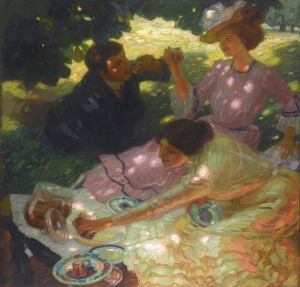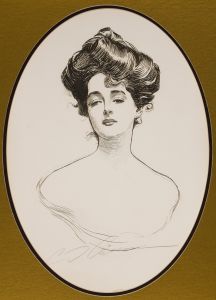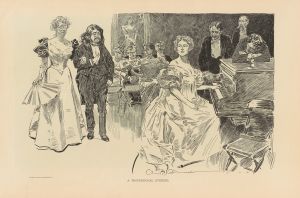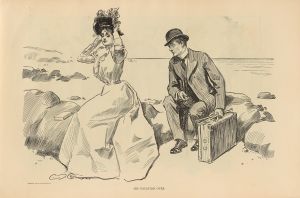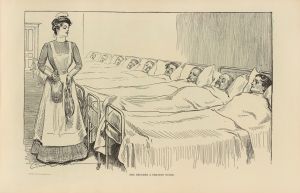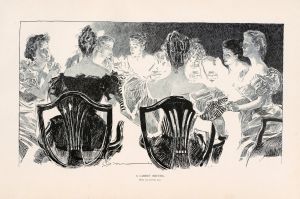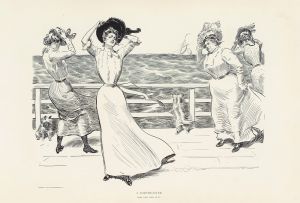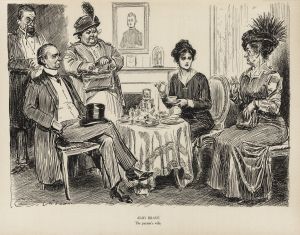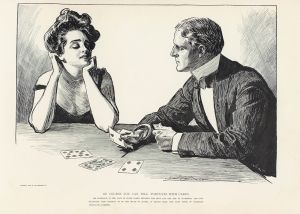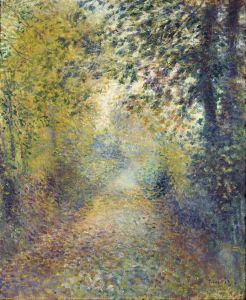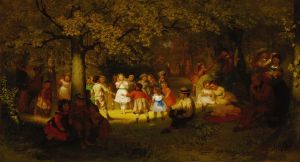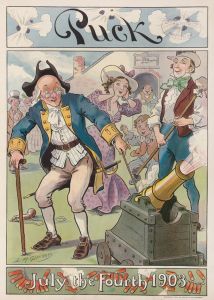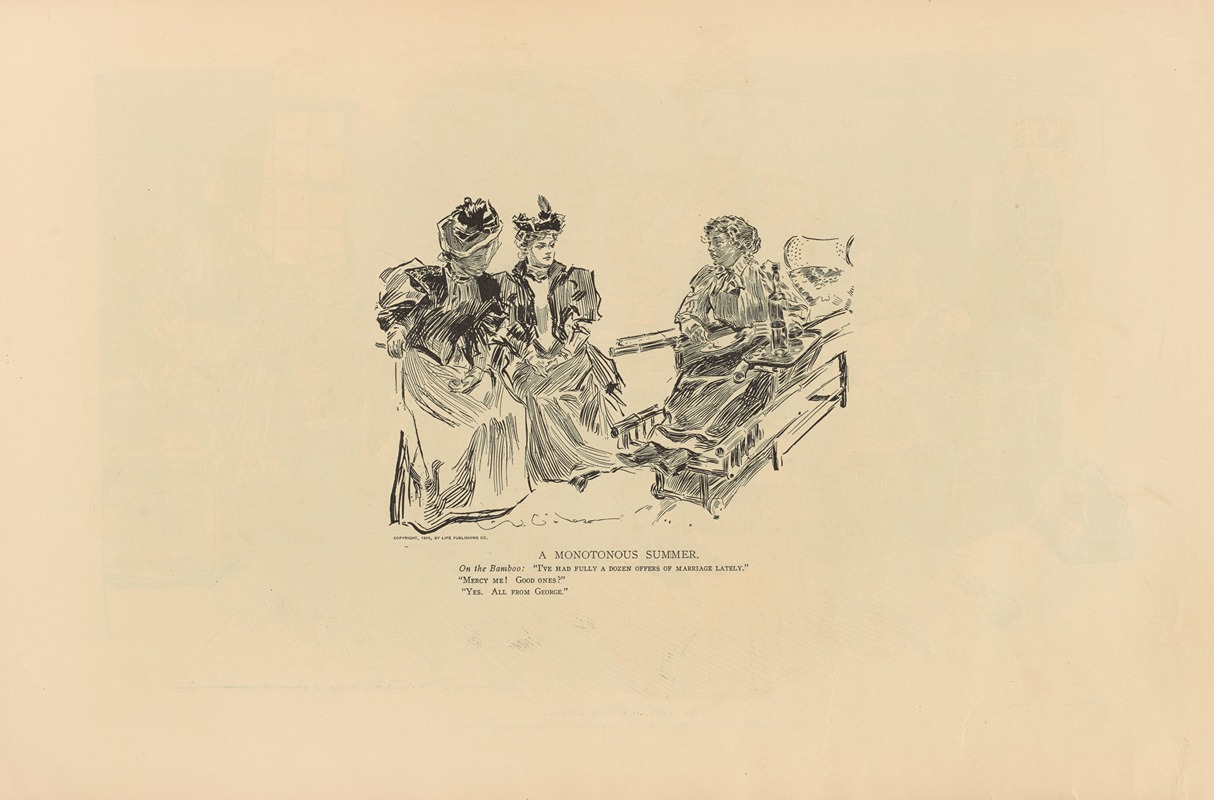
A monotonous summer
A hand-painted replica of Charles Dana Gibson’s masterpiece A monotonous summer, meticulously crafted by professional artists to capture the true essence of the original. Each piece is created with museum-quality canvas and rare mineral pigments, carefully painted by experienced artists with delicate brushstrokes and rich, layered colors to perfectly recreate the texture of the original artwork. Unlike machine-printed reproductions, this hand-painted version brings the painting to life, infused with the artist’s emotions and skill in every stroke. Whether for personal collection or home decoration, it instantly elevates the artistic atmosphere of any space.
Charles Dana Gibson was an influential American illustrator, best known for creating the iconic "Gibson Girl" image, which became a symbol of the idealized American woman at the turn of the 20th century. His work was widely published in magazines such as Life, Harper's Weekly, and Scribner's, and he played a significant role in shaping the visual culture of his time.
"A Monotonous Summer" is one of Gibson's lesser-known works, and there is limited information available about this specific illustration. However, it is consistent with Gibson's style, which often depicted scenes of upper-class society with a touch of humor and social commentary. His illustrations frequently captured the leisurely lifestyles and social dynamics of the American elite during the late 19th and early 20th centuries.
Gibson's illustrations were characterized by their detailed line work and the ability to convey complex social interactions with subtlety and wit. He had a keen eye for fashion and often used his art to comment on the social norms and expectations of his time. The "Gibson Girl," for example, was not just a fashion icon but also a representation of the changing roles of women in society, embodying both beauty and independence.
While specific details about "A Monotonous Summer" are scarce, it is likely that the illustration reflects Gibson's typical themes and style. It may depict a scene of leisure, possibly involving characters engaged in a summer activity, rendered with the artist's characteristic attention to detail and social nuance. Gibson's work often included elements of satire, gently poking fun at the conventions and pretensions of the upper class.
Gibson's influence extended beyond his illustrations; he was a pivotal figure in the world of commercial art and helped elevate the status of illustration as a respected art form. His work was widely recognized and appreciated during his lifetime, and he left a lasting legacy in the field of illustration.
In summary, while specific information about "A Monotonous Summer" is limited, it can be understood within the broader context of Charles Dana Gibson's body of work. His illustrations captured the essence of American society during a time of significant cultural change, and his legacy continues to be appreciated for its artistic merit and social insight.





